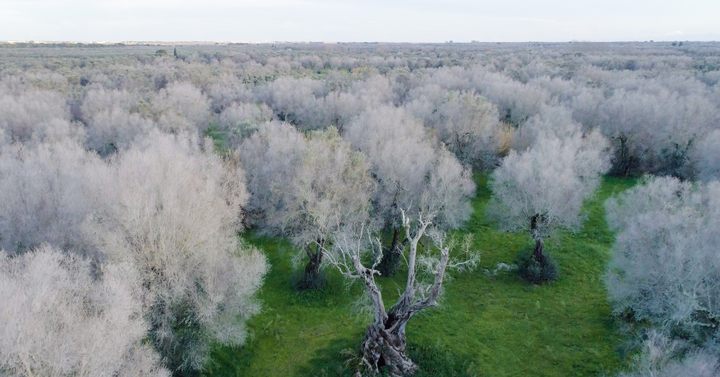

The Farmer Trying to Save Italy’s Ancient Olive Trees
A fast-spreading bacteria could cause an olive-oil apocalypse.
In early 2016, Giovanni Melcarne, an agronomist and the owner of an extra virgin olive oil farm in Gagliano del Capo, walked through the southern Italian countryside of Puglia. He was with a fellow olive-oil farmer who had called and told him there was something he had to see.
The two approached a centuries-old olive tree growing at the edge of the street along a traditional stone wall. All around, the old olive trees that covered the red clay were either dead or in an advanced state of decay, filling the landscape with an unnatural greyness. Melcarne was not surprised: At least 2 million olive trees in Puglia looked this way, including many of his own.
The cause of the blight was Xylella fastidiosa, a bacteria that researchers believe arrived around 2010 from Latin America, possibly from Costa Rica on an imported ornamental plant. Today, Xylella has infected at least one-third of the 60 million olive trees in Puglia, which produces 12 percent of the world’s olive oil. The bacteria leaves no chance of survival: Once a plant is infected, it’s doomed to die in a handful of years. Today, Xylella is spreading fast across Puglia, crossing into other Italian regions and Mediterranean countries, and upending the production of olives and olive oil, the symbols of the Mediterranean.

When the two reached the tree, the olive farmer pointed at a live, green bough on the otherwise dead trunk.
“The man told me that his father had grafted the tree with a Barese olive variety, which is good for eating,” Melcarne says. Grafting is common practice in the area: People take a twig of a different variety and insert it on the trunk of an older tree, where it will grow and bear the kind of olives of the tree it came from. Melcarne immediately suspected that the grafted branch was resistant to Xylella. It seemed to be keeping the olive tree alive.
“And then I thought, ‘Could it be that grafts could save the oldest and grandest olive trees’?” Melcarne says.
At the time, efforts to contain the Xylella blight were going poorly: Italian media and politics was dominated by vicious fights, accusations, and conspiracy theories that prevented a coordinated response. But seeing that bit of green, Melcarne felt hopeful. The agronomist was already exploring ways to fight the disease with a team of scientists, and that visit showed that there might be some hope against the olive-tree apocalypse.
“If today we don’t try to save at least some of the monumental olive trees,” Melcarne asks, “what identity will be left to this region?”

Whether you are in New York, London, or Melbourne, chances are good that the extra virgin olive oil you use to dress your salad, finish a fresh mozzarella, or sear a sea bass comes from Puglia. It is either explicitly labeled as such or, in many cases, disguised under the branding of other estates that didn’t quite yield the harvest they were expecting.
In Puglia, olive trees are everywhere. They have populated these lands since 1,000 BC, when the ancient Greeks brought them. Some trees still growing today saw ancient Romans passing by or welcomed Emperor Frederik II on his way to the Sixth Crusade, while many more were already old when Christopher Columbus stumbled upon the Americas. The trees have always been present in their corrugated fairy shapes, and they are an inherent part of the local culture. Each family owns a few olive trees and treats them like family, like immortal grandparents. Pugliesi have taken their presence for granted for a long time, but Xylella is now crushing that timeless, idyllic reality.
Xylella fastidiosa is carried by a sap-feeding insect, a spittlebug called Philaenus spumarius. When the insect bites an infected leaf, it involuntarily takes the bacteria on its saliva, giving Xylella a free ride to the next plant it feeds on. Through the bite, the bacteria enter the xylem––the plants’ vascular tissue, where water and nutrients flow––traveling countercurrent towards the roots. As the bacteria reproduce, they create a gel that clogs the channels, preventing water and nutrients from passing through. Once the plant is infected, it slowly starts dying.
The disease’s symptoms first appeared around 2010, but Italians didn’t know what was killing their trees. In 2013, scientists realized that it was Xylella. It was the first detection in Europe, and the European Union and Italian government immediately pushed for containment measures that implied the eradication of the infected trees. Speed was crucial: Stopping the spread would only get harder as it dispersed across Italy.
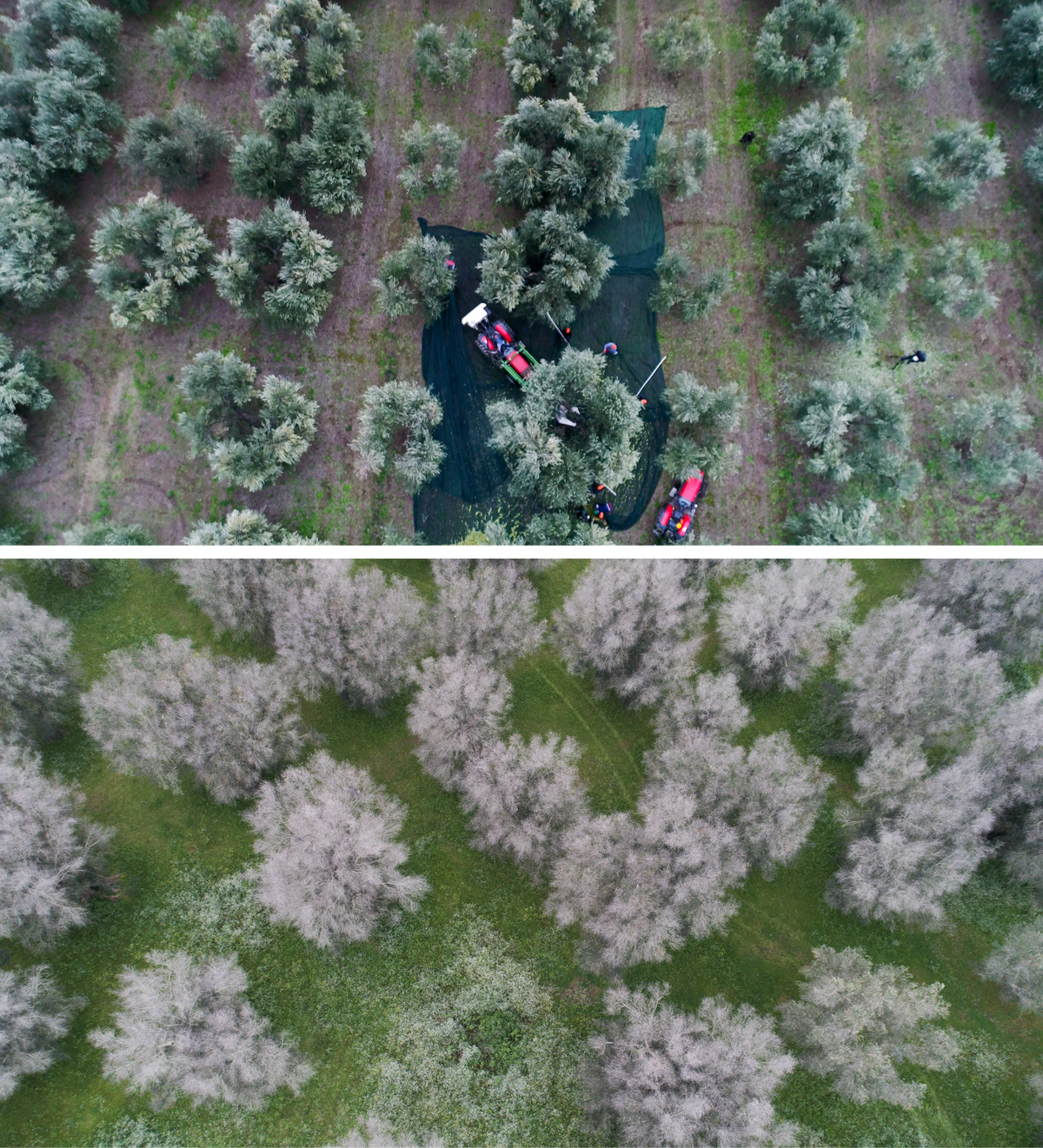
But many Pugliesi could not believe that a bacteria could kill these eternal trees. So thousands of people campaigned to stop the uprootings. Farmers chained themselves to infected trees, stopped railways, protested in city centers, and got full support from TV personalities, singers, and politicians, including Michele Emiliano, the region’s governor.
Much like the millions of people who would later resist pandemic lockdowns or call Covid-19 a hoax, the protesters believed that what was happening was part of a conspiracy. Some believed it was Monsanto’s fault and that the agrochemical company wanted to sell seeds for immune, genetically modified olive trees to farmers. Others said it was entrepreneurs and the Mafia, who wanted to build indiscriminately where the trees stood. A few more blamed chemtrails. The enraged public opinion led by an anti-science movement got so much momentum that in December 2015, government prosecutors from the city of Lecce started investigating the scientists studying the disease, blaming them for having brought it to Puglia. (After four years of investigations, all charges were dropped.)
“I do not expect to be thanked, but being pilloried by the media for having done my work with passion is a paradox,” says Donato Boscia, a plant pathologist and head researcher for Xylella at the National Research Council of Italy (CNR).
While conspiracies flourished, the disease advanced north at a speed of 30 km (18.6 miles) a year. Xylella is present in several countries worldwide, including the U.S., where it has been known for more than a century for attacking grapevines. But before arriving in Puglia, Xylella had never been detected on olive trees before.
“We could not wait for somebody else to deal with it,” says Pierfederico La Notte, an agronomist and researcher working on Xylella at CNR with Donato Boscia. While they studied how Xylella impacted the olive trees, Boscia and La Notte met with Giovanni Melcarne, the olive oil producer from Gagliano del Capo. Melcarne had noticed that in Salento, the lower tip of Puglia, certain olive trees were still alive between an ocean of death. It was 2016, and Melcarne brought the scientists to Gallipoli to check the green and thriving graft his fellow farmer had shown him, which later turned out to be Leccino––one of the only two olive varieties known to be resistant to the bacteria.
“That plant lightened up lots of lightbulbs,” La Notte says. Grafting, a technique as old as agriculture, seemed to show promise, just like it did a century ago when it saved European grapevines from Phylloxera, a tiny aphid that nearly destroyed the continent’s wine industry. If a resistant variety of olives could be grafted on the millenary trunks, the plant appeared to have a chance of survival.
In April 2016, while local politicians were delaying scientific research by withholding funding, Melcarne invested 130,000 euros––around $156,000, his lifetime savings––to graft 14 hectares of his olive trees. His family had been in the olive business since the 1500s, so Melcarne took the enormous financial risk not only to save his company, but to maintain his family’s tradition. He and the CNR researchers wanted to see if the varieties known to be resistant to Xylella––Leccino and Favolosa––could be grafted on older trees, and if other types had some resistance too. Lanotte called on greenhouses, collections, and producers from every corner of the globe, and this international community of scientists and farmers responded by shipping samples of their olive varieties to Puglia. In a short time, they grafted 270 different olive varieties on Melcarne’s fields.

While still solely funded by Melcarne’s life savings—due to the chaos and conspiracies paralzying the government response—their work advanced with trial and error. Grafts died from disease, broke during inclement weather, and were vandalized: One morning Melcarne found that dozens of his grafts had been snapped during the night. He suspected conspiracy theorists were behind it.
Word of the group’s experiment spread. Vanzio Turcato, a northern Italian who had decided to build his house in Puglia, on land home to a few dozen olive trees, became an early adopter of Melcarne’s grafts. He and his wife couldn’t stand the idea of seeing their 54 monumental olive trees die, so, in 2017, Melcarne grafted them all with patch grafts of Favolosa. But only two grafts out of 250 worked. It took two more years of trials to understand that crown grafts––chopping the old branch clean and inserting the grafts on the mutilated extremity––was the way to go. They had finally perfected a grafting protocol.
“I’d be happy if we manage to save even just 50 percent of the trees,” Turcato says. Today, though, his trees are vegetating luxuriantly, surrounded by his neighbors’ endless fields of grey, dead olive trees.
Ninety miles (150 km) from Turcato’s fields, Armando Balestrazzi, the owner of Masseria Il Frantoio, a boutique hotel and olive-oil farm, was well aware of the problem that was about to hit. And according to La Notte and Melcarne, olive trees have a higher probability of surviving if they are grafted before getting infected. The more advanced the infection, the less likely the grafts will work.

“When I heard about the grafts, I decided to run a test,” Balestrazzi says. It was 2019. His area was part of the disease’s buffer zone, and Balestrazzi had in his property 300 Leccino trees resistant to the disease. So he used their twigs to graft 50 of his 2,300 trees, all at least 1,000 years old. “I couldn’t stand with my arms folded while the scourge hit my home. I had to try to save them. And after two years, I know that it works.”
Balestrazzi says that 70 percent of his grafts have survived and are flourishing, and he has 2,250 more trees to graft. The region of Puglia recently issued a 5-million-euro incentive—advised by the work of La Notte and Melcarne—to push farmers to graft their oldest trees. But Balestrazzi is skeptical: “We still haven’t received any money from the damages of the 2016 flooding. Multiply $120 [the cost to graft a tree] by 2,250. How can I advance that amount of money knowing that probably I will never be reimbursed?” Many farmers are stuck in limbo: They want to save their trees, but bureaucracy and pandemic-related financial difficulties prevent them from doing so.
Grafting cannot save every olive tree of Puglia, though. It would take decades, as well as money that residents and the region do not seem to have. The researchers know that the grafting technique can only save the oldest trees and their beauty.
According to Melcarne, what’s needed to save Puglia’s olive groves is a long-term, coordinated plan led by politicians and scientists that stops the northward spread of the disease while investing in finding resistant varieties and grafting the oldest olive trees.

After three long years, the region’s administration recognized the value of Melcarne and La Notte’s work. They granted them 2 million euros to continue grafting and uncover new resistant, local varieties. Besides leading the grafting crusade, Melcarne is currently looking to reproduce wild Puglian olive trees that are still alive where Xylella has killed any other olive tree. The quality of local olives is what distinguishes the region’s extra-virgin olive oil from others, and local farmers are wary of planting resistant varieties such as Favolosa that do not belong to that territory and taste different. While they have found a grafting technique to save the region’s grandest trees, it is this search for local, resistant varieties that could protect Puglia’s beloved olive oil and the industry and food culture it supports.
Thanks to the thousands of tips he receives on social media, Melcarne has checked about 30,000 wild olives trees, covering 600,000 kilometers (372,822 miles) in his car in the process. He dreams of finding a local olive variety to replant the orchards destroyed by the bacteria. He picked 30 of them for reproduction, and he says he has found good candidates.
“I think we found one,” Melcarne says proudly. The future of the olive tree in the Mediterranean might well be in his hands.
This story was supported by the Pulitzer Center.
Gastro Obscura covers the world’s most wondrous food and drink.
Sign up for our email, delivered twice a week.

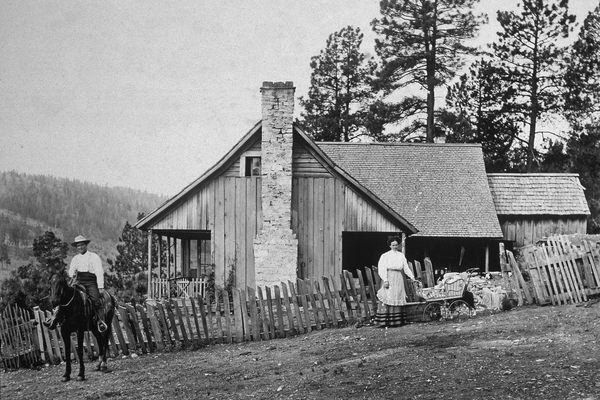

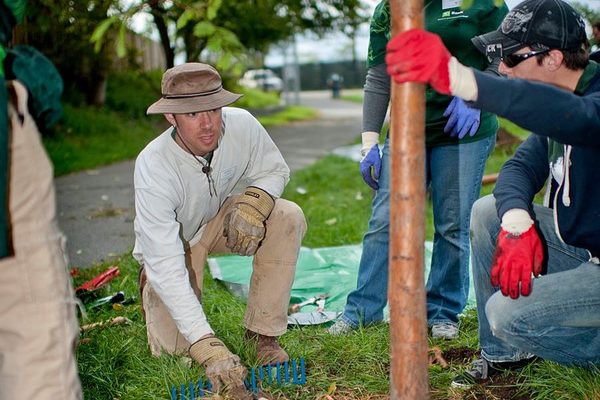
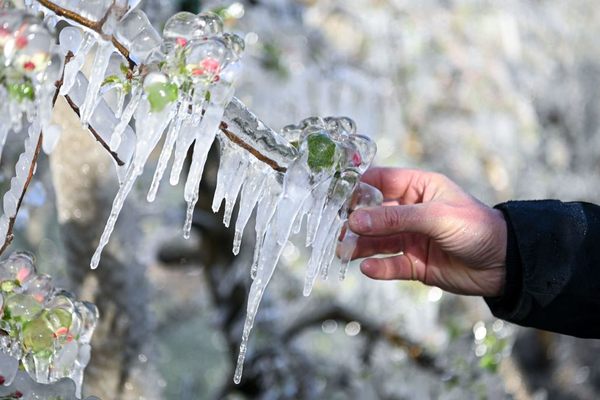
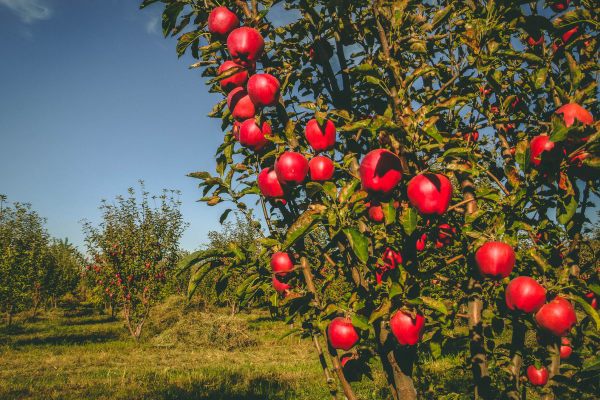














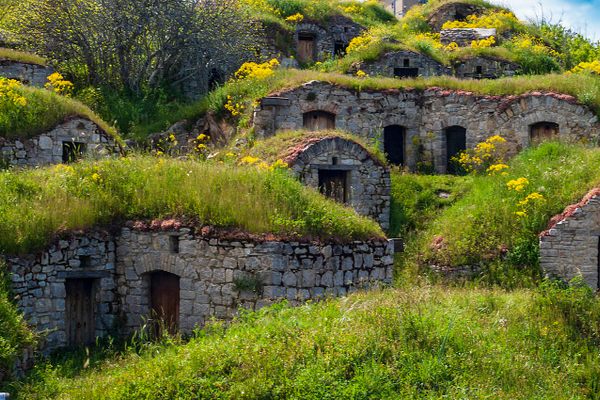






Follow us on Twitter to get the latest on the world's hidden wonders.
Like us on Facebook to get the latest on the world's hidden wonders.
Follow us on Twitter Like us on Facebook